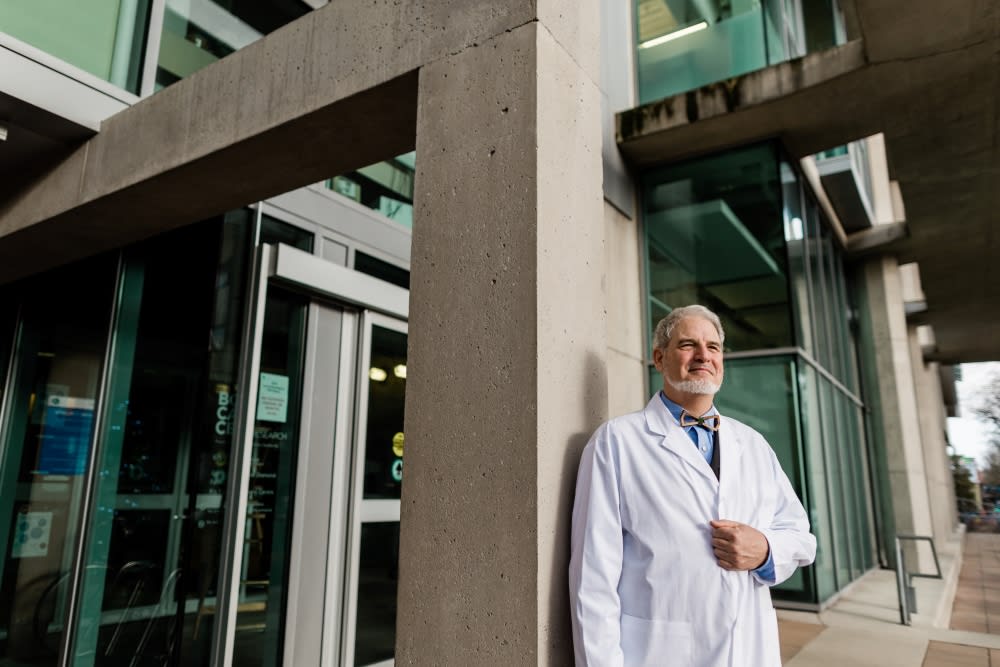As I explained last week, I hold two positions at BC Cancer – Kelowna as both a Radiation Oncologist and the Regional Medical Leader for the Interior. These two positions allow for diverse work and the opportunity to connect with a variety of patients.
WE STRIVE TO ALWAYS IMPROVE THE PATIENT EXPERIENCE
My work with patients is what drives me each day. Some of the most important insights and learning stem from my work with patients and have inspired work in my regional medical director role to keep us moving forward and improving the system of cancer care. Together with the Senior Director of Regional Clinical Operations, John Larmet, we strive for improvements with our patients in mind.
THE GIFT OF TIME
I recently received a card from a former patient’s wife through the BC Cancer Foundation office in Kelowna. Thirteen years ago, I treated her husband who had aggressive and advanced prostate cancer. Thankfully his treatment was successful and he remained disease free for the rest of his life. They were given 13 incredible years together and it was so rewarding to hear the heartfelt gratitude his spouse felt for the work we did here.
WE’RE CHANGING OUTCOMES
Another patient told me about some unexpected money issues. She was a very active, healthy woman who was diagnosed with advanced lung cancer with just a 10-15% chance of cure. She had smoked a little in her 20s and 30s but was otherwise in good health. The odds were not in her favour but with treatment, two years later she was feeling great and back to her active lifestyle.
With an 85% chance of her cancer recurring, she decided to really live life to the fullest. Five years later I saw her and she said, “You know what doc, I have to go back to work,” she was in her late 50s at this time, “I wasn’t expecting to live this long and here I am”.
INDIVIDUALIZED TREATMENT IS CHANGING LIVES
Another patient story highlights the impact of treating an individual’s cancer based on their genetic driver, which was mentioned in my first blog.
My patient was in his late 50s, recently married and had a very large tumour in his lung. Unfortunately, his prognosis wasn’t good, his cancer had an 8-10% chance of cure. He was treated with standard radiation and chemotherapy but his tumour only shrunk modestly. We knew the chance of getting it all was small with this approach but we collected tissue samples that allowed us to discover the tumour had a specific genetic driver which informed an individualized treatment plan. Today, six years later, he is still alive due to that test and the targeted treatment that was developed because of it.
When I think back to 10-15 years ago, patients like him would not have survived. Today, with medical advancements that donors contribute to, we are taking previously incurable cancers and turning them into a disease you can live with.
Next week I am going to touch on how important our partnership is with the BC Cancer Foundation and the donors who allow our team to do the work we love and save lives.
Dr. Ross Halperin


